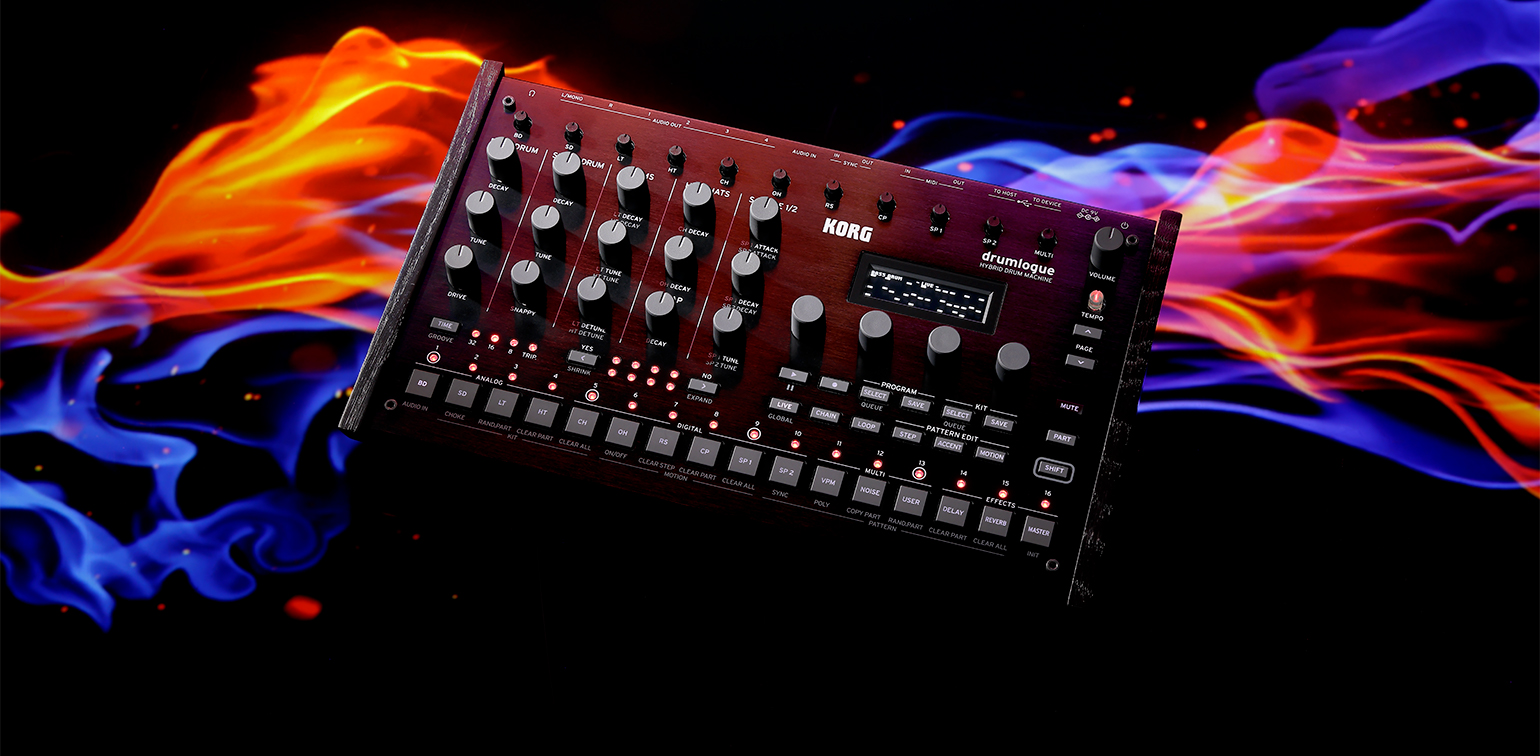
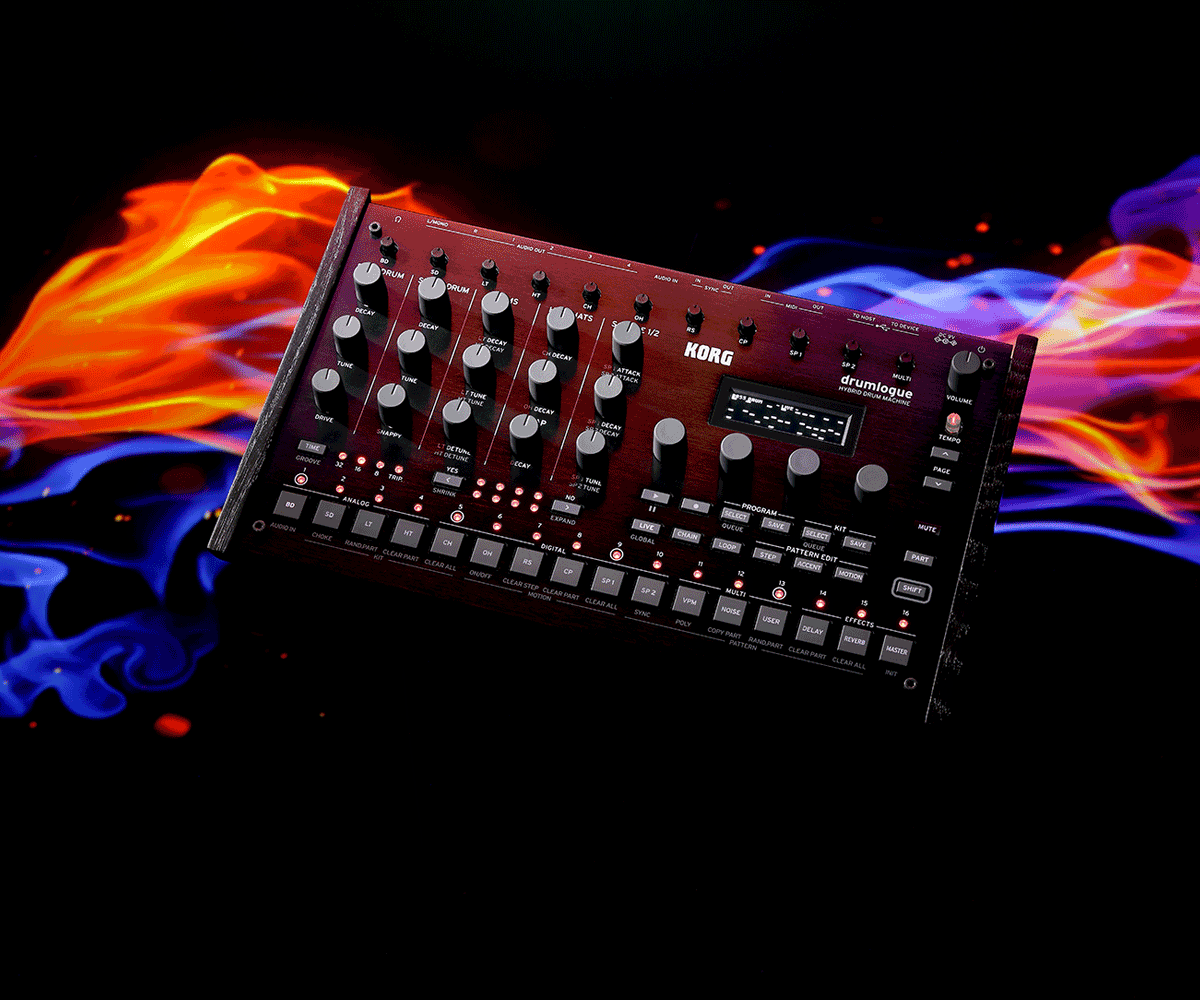
SoundCloud
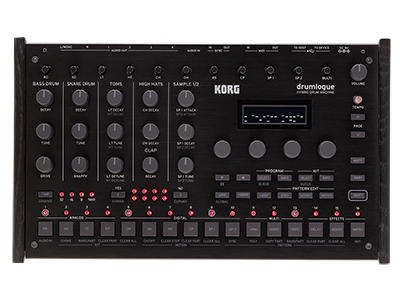
drumlogue
پشتیبانی
بیشتر بدانید
سایت های مرتبط
محصولات مرتبط
اخبار
- 2025.01.10
- Updates - drumlogue System Updater v1.3.0 is now available!
- 2023.10.02
- Updates - drumlogue System Updater v1.2.0 is now available!
- 2023.01.23
- Updates - drumlogue System Updater v1.1.0 is now available!
- 2022.09.22
- Updates - KORG USB-MIDI Driver (for Windows 10) v1.15 r49e is now available! drumlogue, Liano, and NTS-2 are now supported.
drumlogue SDK
In the tradition of the prologue and minilogue xd, drumlogue also offers an API (Application Programming Interface) that allows anyone to extend the possibilities of the hardware by developing plugins called “units”. Using the drumlogue SDK (Standard Development Kit), custom synthesizer, delay, reverb and master effect units can be created, and then loaded onto the drumlogue via a USB connection. (mass storage device mode)
Important:
* The SDK and its documentation is currently available on GitHub
Download the logue SDK (GitHub.com)
* Units built for the prologue, minilogue xd and NTS-1 are not directly compatible with drumlogue
User Synths
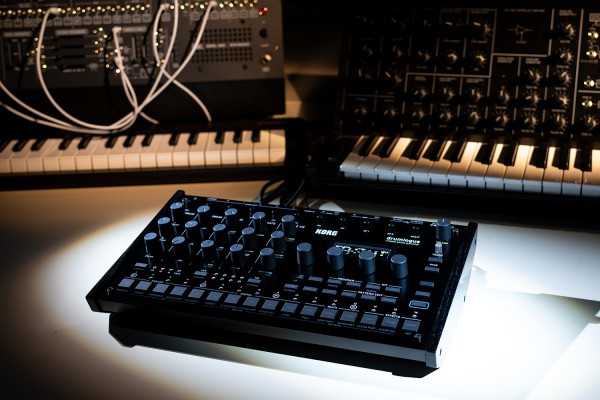
Up to 24 custom synthesizer units can be loaded into the Multi-Engine User section. When selected, a custom synthesizer can be played via the Multi-Engine’s dedicated sequencer lane, as well as via MIDI messages. Each synthesizer can expose up to 24 custom parameters accessible via the encoders and OLED display, each of which can also be modulated via the sequencer’s motion feature.
Being complete synthesizer voices, developers have complete freedom to add any type of internal modulation and articulation they feel like. Polyphonic custom synthesizers are also possible (within CPU resource limits), although can only be played with true polyphony via MIDI.
User Effects
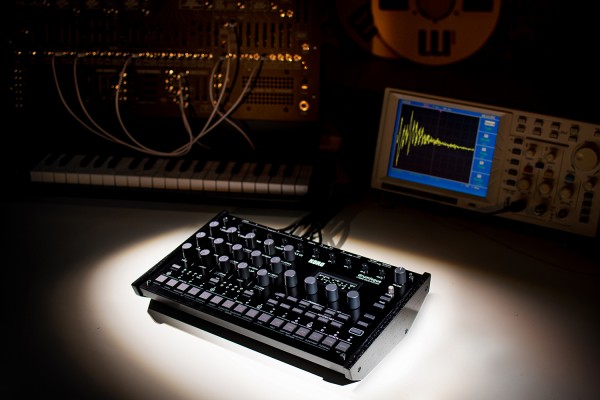
For each effect type (delay, reverb, master), up to 24 custom effect units can be loaded onto the drumlogue. These custom effects will appear at the end of the effect list of each type. Each custom effect can expose up to 24 custom parameters accessible via the encoders and OLED display, and can be used in the same way as the internal effects without additional restrictions.
Loading Custom Synths/Effects
- Connect your drumlogue’s USB device port to a computer with a USB cable.
- Power up the drumlogue while holding the record button.
- A USB mass storage device named “drumlogue” will appear on your computer.
- Copy the custom unit file (extension .drmlgunit) to the correct folder under the folder corresponding to the plugin type: Units/Synths/, Units/DelayFXs/, Units/ReverbFXs/, or Units/MasterFXs/.
- Once the data is fully copied, eject the mass storage device.
- Press the “YES” button on the drumlogue to power up with the new units made available.
Obtaining Custom Synths/Effects
There is no centralized store for custom synths/effects. 3rd party developers are free to distribute their custom synths/effects through alternative channels such as community websites, forums, GitHub etc and in some cases will be featured on this page.
Download the logue SDK (GitHub.com)Creating Custom Synths/Effects
The drumlogue SDK provides a the required tools to and template projects to create custom Synths and Effects.
FAQ
Can I use custom oscillator/effects units from prologue, minilogue xd or NTS-1 on drumlogue (and vice versa)?
No, drumlogue’s custom units are not directly compatible with prologue, minilogue xd and NTS-1 units.
The drumlogue synths are conceptually different from the oscillator units of these other products, and master effects do not exist on these other products. However, delay and reverb effects should be fairly fairly easy to convert to the drumlogue format by 3rd party developers.
Do I need programming experience to create my own content?
Yes. Please note that the drumlogue SDK is meant for programmers, and not a neophyte-friendly high-level editor. Some level of software development expertise is expected and required. Please note that the drumlogue SDK is provided as-is, and no official technical support will be provided.
What programming language can I use?
drumlogue custom synth and effect units can be written in C, C++ and make use of ARMv7-A NEON instructions.
What size and memory usage limitations are there?
drumlogue custom synth and effect units are not bound to specific size and memory usage limitations. However, the user storage space of the drumlogue is limited to 32MB, and all custom synth and effects units must be loadable in memory at once, so care must be taken to not use more memory than absolutely necessary.





